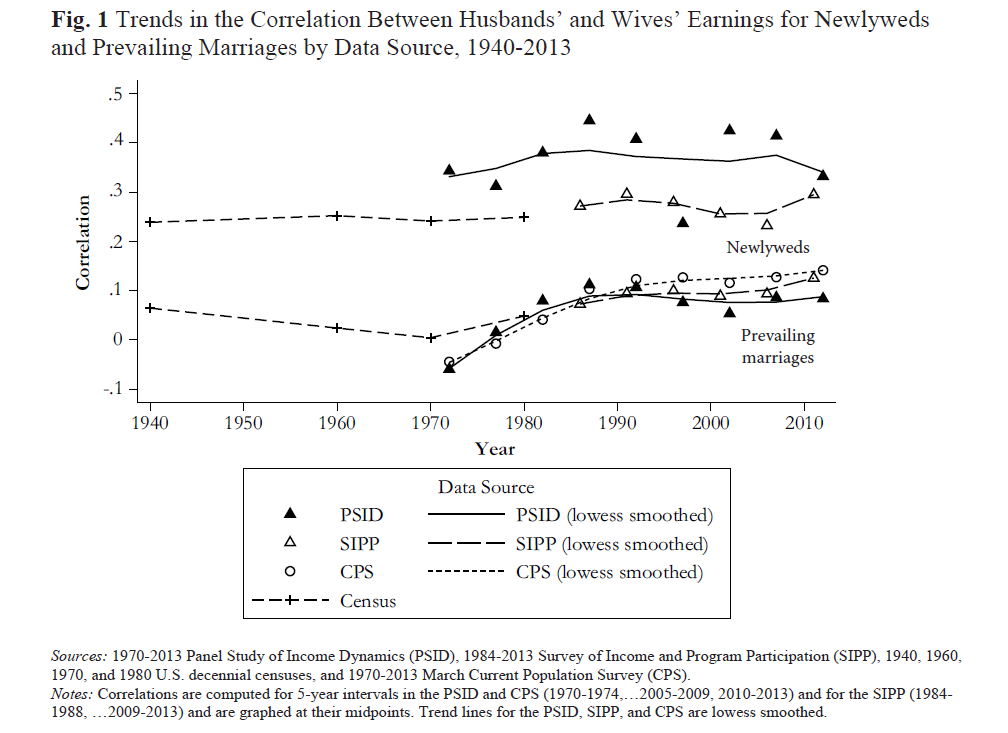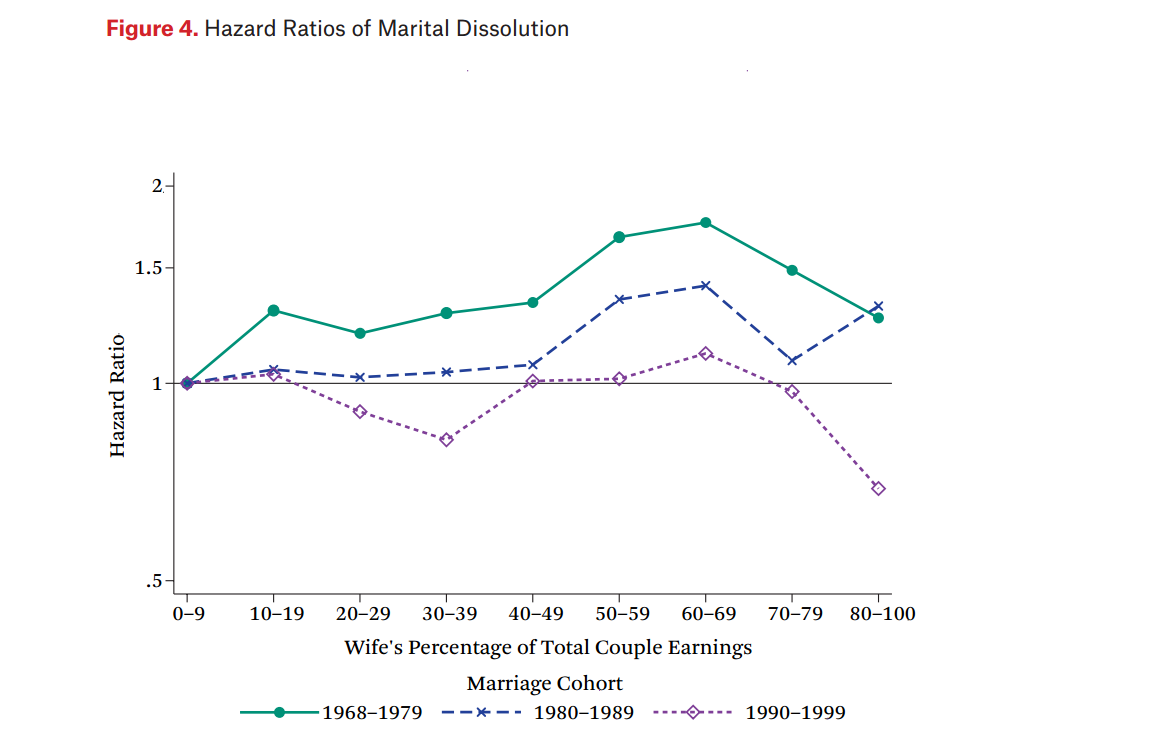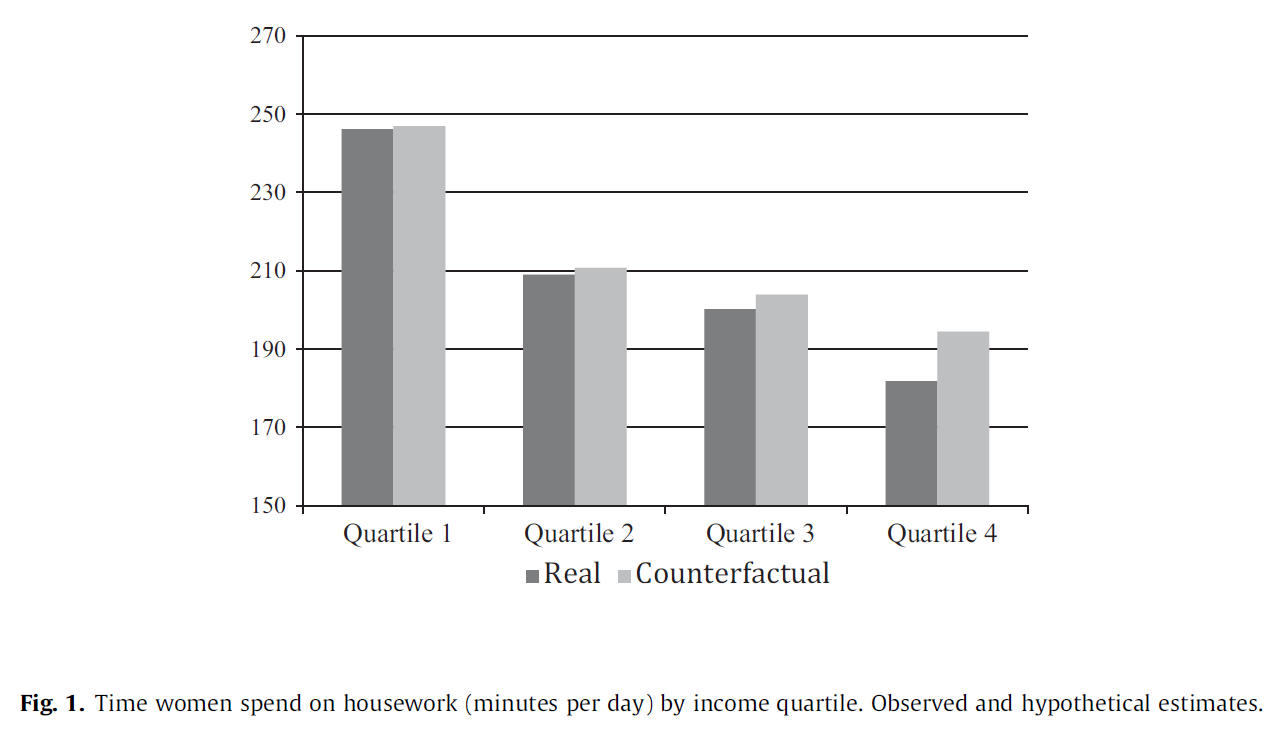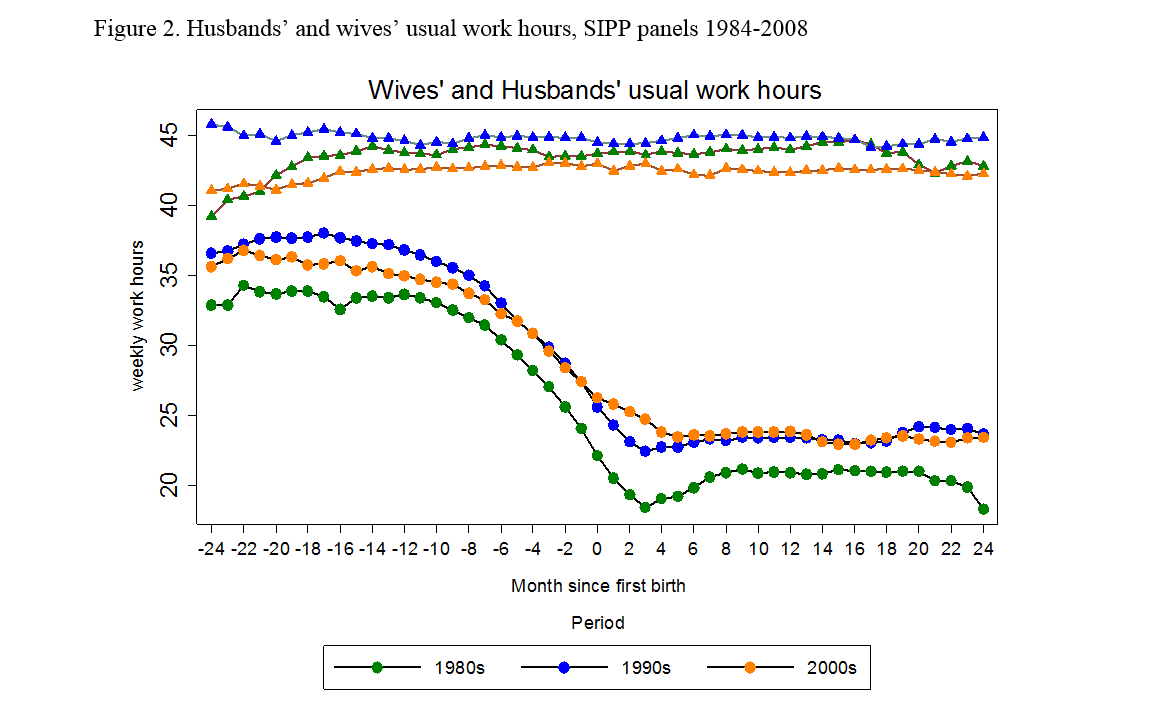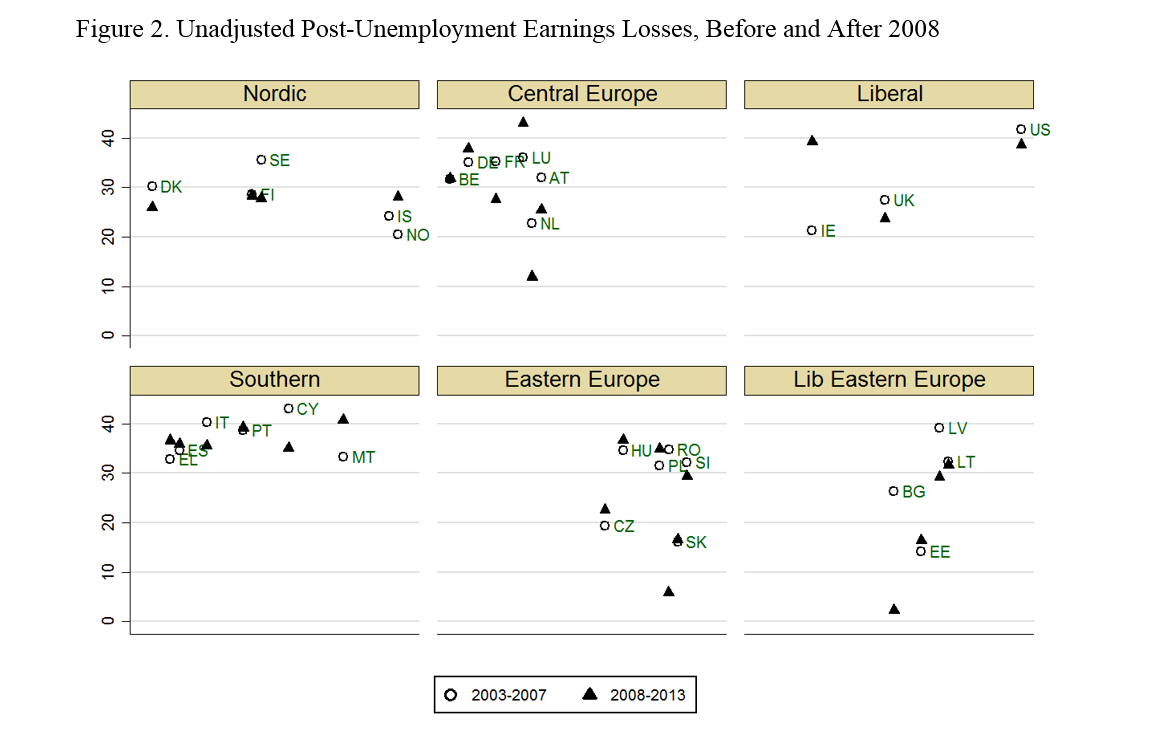My research examines how gender, work, families and public policies structure economic inequalities. I am particularly interested on how inequalities change over time and vary across social groups and contexts. I employ quantitative techniques and longitudinal datasets from multiple countries along with content analyses of documentary and interview data.
Family change and economic inequalities: With the rise of women’s wage labor, family income is increasingly shaped by women’s and men’s economic prospects as well as by who partners with whom. My research shows how these changes contribute to trends in household income inequality in the US and Europe. See relevant publications:
- Changes in Couples’ Earnings Following Parenthood
- Trends in Couples’ Work Patterns after Childbirth
- Trends in Spouses Economic Similarity
Variation and uneven change in gender relations in the family: Couples are today generally more gender egalitarian than in the past, but change has not been uniformly paced and there is a lot of variation in the degree of gender egalitarianism across social strata. I study how gender inequalities within couples change over time and vary across social groups. I am particularly interested in the role that economic resources play in fostering egalitarian gender relations in the family. See relevant publications:
- Marriage and Masculinity: Male-Breadwinner Culture, Unemployment, and Separation Risk in 29 Countries
- Trends in Wives’ Relative Earnings and Marital Dissolution
- Gender and Class Housework Inequalities in the Era of Outsourcing
- Migration, Household Tasks, and Gender Relations in Georgia
Welfare states and social stratification: Social policies are both engines of social change as well as instruments that reproduce social inequalities. My research analyzes how welfare states shape work and family patterns in ways that contribute to mitigate or exacerbate social stratification processes. One line of work in this context has been to explore the impact of Basic Income policies on various aspects of social life, including crime and family relationships. See relevant publications:
- The Impact of Basic Income on Familial and Gender Relations
- The Impact of an Experimental Guaranteed Income on Crime and Violence
- Regulated Earnings Security: The Relationship between Employment Protection and Unemployment Scarring
———————————————————————————————————
Trends in Economic Homogamy: Changes in Assortative Mating or the Division of Paid Labor in Marriage? (Gonalons-Pons & Schwartz, published in Demography)
The growing economic resemblance of spouses has contributed to rising inequality by increasing the number of couples in which there are two high- or two low-earning partners. The dominant explanation for this trend is increased assortative mating. Previous research has primarily relied on cross-sectional data and thus has been unable to disentangle changes in assortative mating
from changes in the division of spouses’ paid labor—a potentially key mechanism given the dramatic rise in wives’ labor supply. We use data from the Panel Study of Income Dynamics (PSID) to decompose the increase in the correlation between spouses’ earnings and its contribution to inequality between 1970 to 2013 into parts due to (a) changes in assortative mating and (b) changes in the division of paid labor. Contrary to what has often been assumed, the rise of economic homogamy and its contribution to inequality is largely attributable to
changes in the division of paid labor, rather than changes in sorting on earnings or earnings potential. Our findings indicate that the rise of economic homogamy cannot be explained by hypotheses centered on meeting and matching opportunities and show where in this process inequality is generated and where it is not.
Trends in Relative Earnings and Marital Dissolution: Are Wives Who Outearn Their Husbands Still More Likely to Divorce? (Schwartz & Gonalons-Pons, published in The Russell Sage Foundation Journal of the Social Sciences)
As women’s labor force participation and earnings have grown, so too has the likelihood that wives outearn their husbands. A common concern is that these couples may be at heightened risk of divorce. Yet with the rise of egalitarian marriage, wives’ relative earnings may be more weakly associated with divorce than in the past. We examine trends in the association between wives’ relative earnings and marital dissolution using data from the 1968-2009 Panel Study of Income Dynamics. We find that wives’ relative earnings were positively associated with the risk of divorce among couples married in the late 1960s and 1970s and that this was especially true for wives who outearned their husbands, but this was no longer the case for couples married in the 1990s. Change was concentrated among middle-earning husbands and non-college graduates, a finding consistent with the economic squeeze of the middle class over this period.
Gender and Class Housework Inequalities in the Era of Outsouorcing. Hiring Domestic Work in Spain (Gonalons-Pons, published in Social Science Research)
Many households regularly outsource unpaid domestic labor by purchasing services and products to help with cleaning, cooking, ironing, and other chores. Despite the prevalence of this practice, scholars know little about how it affects inequalities in the time spent on housework. Drawing on data on 3540 dual-earner households in Spain, this article examines the relationship between hiring domestic work and both the within-household gender gap in housework and the class gap in housework among women. I find that women who hire do about 30 min less housework per day than non-hiring women, but in relation to their partners these women continue to do the same share of housework. Using counterfactual analysis, I find that the absence of paid domestic work is associated with a 20% decline in the class gap in housework among Spanish women.
Trends in Couples’ Work Patterns after Childbirth: Evidence from SIPP and Administrative Earnings (Musick, Gonalons-Pons, & Schwartz, funded by The Russell Sage Foundation)
This paper examines how couple negotiation over work and earnings following parenthood has changed over time and how it has varied by social class. These questions represent critical gaps in the literature on gender, work, and family that limit our understanding of how family decision-making is shaped by changing norms and institutions. We leverage long-running, successive panels from the Survey of Income and Program Participation (SIPP) linked to administrative earnings data to assess trends over four decades in couples’ work and earnings before and after first birth. We find increases over time in wives’ employment and earnings following parenthood. The steepest increases in wives’ employment and earnings were in the in the early decades of our time series (the 1970s and 1980s), and gains were greatest among college-educated wives. Observed changes in employment following parenthood have been minimal among husbands, resulting in convergence in couples’ work hours over time, particularly among the college-educated. Because husbands of college-educated wives experienced significant earnings increases over time in the years following birth (like their wives), we see no analogous trend toward convergence in couples’ earnings. Results have implications for trends in family income inequality.
Migration, Household Tasks, and Gender: Evidence from the Republic of Georgia (Toroysan, Gerber & Gonalons-Pons, published in International Migration Review)
We examine whether migration affects the gender division of household tasks and participation in leisure within origin-country households using survey data from the Republic of Georgia. Our theoretical framework identifies two sets of mechanisms whereby migration might influence gender differences in home activities: migrant experience effects and migrant absence effects. We test for both types of effects on the probability that men and women perform gender atypical household tasks and engage in leisure activities by comparing households with and without currently absent and return migrants using probit regressions. We find evidence for both migration absence and migration experience effects on gender differences in housework and leisure. However, these effects are complex and contradictory: generally, male migration tends to exacerbate gender differences in the sending household while female migration tends to ameliorate them.
Unemployment Scarring in the Great Recession (Gonalons-Pons & Gangl, ongoing project funded by European Research Council)
As the current economic recession dramatically raised the levels of unemployment in a number of European countries, we seek to address the question of how institutional protection for the unemployed has performed in this period of severe economic crisis. Previous research demonstrated that episodes of unemployment have enduring negative effects on worker’ career prospects and that labour market institutions, such as employment protection or unemployment insurance, play an important role mitigating those effects (e.g. Gangl, 2006). Earlier research also demonstrated that aggregate labour market conditions affect unemployment scarring, yet it has not been examined whether or not the effectiveness of labour market policies in protecting workers’ reemployment and earnings capacity also is, as might be expected, deteriorating in a period of severe economic crisis. We examine these questions using harmonized work history data for 28 countries for the years 2004 to 2012 (from the European Union Statistics on Income and Living Conditions (EU-SILC), German Socioeconomic Panel (GSOEP), the British Household Panel Study (BHPS), the Understanding Societies Survey (UKLS), and the Survey of Income and Program Participation (SIPP). We use multilevel modelling to estimate the effect of the recession on workers’ reemployment and post-unemployment earnings, and to assess how this effect varies across countries.

